 W
WMohammad Yousuf Abul Farah Tartusi was a popular Sufi Muslim saint. He is regarded as one of the common ancestors of the Sufi Tariqahs, which form an unbroken chain to the Islamic prophet Mohammad.
 W
WGeorge Alexander Aberle, known as eden ahbez, was an American songwriter and recording artist of the 1940s to 1960s, whose lifestyle in California was influential in the hippie movement. He was known to friends simply as ahbe.
 W
WAntisthenes was a Greek philosopher and a pupil of Socrates. Antisthenes first learned rhetoric under Gorgias before becoming an ardent disciple of Socrates. He adopted and developed the ethical side of Socrates' teachings, advocating an ascetic life lived in accordance with virtue. Later writers regarded him as the founder of Cynic philosophy.
 W
WSaint Arsenios the Cappadocian, born in Kephalochori, Cappadocia was a Greek dean and the spiritual father of Elder Paisios of Mount Athos. He had a brother named Vlasios.
 W
WMahavatar Babaji is the name given to an Indian yogi by Yogiraj Lahiri Mahasaya, and several of his disciples, Sri Yukteswar Giri, Baba Nasib Singh Ji, Ram Gopal Muzumdar, Swami Kebalananda, and Swami Pranabananda Giri who reported meeting him between 1861 and 1935. Some of these meetings were described by Paramahansa Yogananda in his 1946 book Autobiography of a Yogi, including a report of Yogananda's own meeting with the yogi. Another account was given by Sri Yukteswar Giri in his 1894 book The Holy Science. According to Sri M's autobiography, Babaji was Lord Shiva. In the second to last chapter of his book, he mentions Babaji changing his form to that of Lord Shiva. All of these accounts, along with additional reported meetings, are described in various biographies. According to Yogananda's autobiography, Babaji has resided for at least hundreds of years in the remote Himalayan regions of India, seen in person by only a small number of disciples and others.
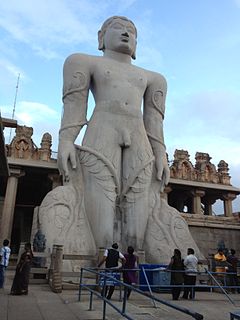 W
WBahubali, a much revered figure among Jains, was the son of Rishabhanatha and the brother of Bharata Chakravartin. He is said to have meditated motionless for a year in a standing posture (kayotsarga) and that during this time, climbing plants grew around his legs. After his one year of meditation, Bahubali is said to have attained omniscience.
 W
WSaint Basil the Younger was a Byzantine Greek holy man and visionary. He is the subject of a Greek hagiographical biography, the Vita sancti Basilii iunioris, written by his pupil Gregory. Although the Vita portrays its subject as historical, there is yet no consensus whether Basil or even Gregory were real persons or fabrications.
 W
WBhikshatana or Bhikshatana-murti is an aspect of the Hindu god Shiva as the "Supreme mendicant" or the "Supreme Beggar". Bhikshtana is depicted as a nude four-armed man adorned with ornaments who holds a begging bowl in his hand and is followed by demonic attendants and love-sick women.
 W
WBaba Lokenath Brahmachari was a Bengali spiritual master and yogi, considered to be one of the most influential gurus of oriental philosophy.
 W
WJohn Cassian, also known as John the Ascetic and John Cassian the Roman, was a Christian monk and theologian celebrated in both the Western and Eastern churches for his mystical writings. Cassian is noted for his role in bringing the ideas and practices of early Christian monasticism to the medieval West.
 W
WBaba Sri Chand, also referred to as Baba Sri Chand was the founder of the ascetic sect of Udasin and was the elder son of Guru Nanak, first Guru and founder of Sikhism. Sikh sources give his life the unlikely dates of 8 September 1494 – 13 January 1629, which would have made him 134 years old upon his death. He was born to Mata Sulakhani on Bhadra sudi 9, 1551 Bikrami. Baba Sri Chand Ji is the greatest Brahmagiani among the first Sahibzaden and Brahmagiani of Sri Guru Nanak Dev Ji. We go to gurudwaras, temples so that our attention will be diverted from this world to the God of Surti. But if we go there and talk only about the world, then there is the benefit of going there.
 W
WCrates of Thebes was a Greek Cynic philosopher, the principal pupil of Diogenes of Sinope and the husband of Hipparchia of Maroneia who lived in the same manner as him. Crates gave away his money to live a life of poverty on the streets of Athens. Respected by the people of Athens, he is remembered for being the teacher of Zeno of Citium, the founder of Stoicism. Various fragments of Crates' teachings survive, including his description of the ideal Cynic state.
 W
WSaint David was a Welsh bishop of Mynyw during the 6th century. He is the patron saint of Wales. David was a native of Wales, and a relatively large amount of information is known about his life. His birth date, however, is uncertain: suggestions range from 462 to 512. He is traditionally believed to be the son of Saint Non and the grandson of Ceredig ap Cunedda, king of Ceredigion. The Welsh annals placed his death 569 years after the birth of Christ, but Phillimore's dating revised this to 601.
 W
WDiogenes, also known as Diogenes the Cynic, was a Greek philosopher and one of the founders of Cynic philosophy. He was born in Sinope, an Ionian colony on the Black Sea coast of Anatolia in 412 or 404 BC and died at Corinth in 323 BC.
 W
WJosemaría Escrivá de Balaguer y Albás was a Spanish Roman Catholic priest who founded Opus Dei, an organization of laypeople and priests dedicated to the teaching that everyone is called to holiness by God and that ordinary life can result in sanctity. He was canonized in 2002 by Pope John Paul II, who declared Josemaría should be "counted among the great witnesses of Christianity."
 W
WFrancis of Assisi, venerated as Saint Francis of Assisi, also known in his ministry as Francesco, was an Italian Catholic friar, deacon, mystic, and preacher. He founded the men's Order of Friars Minor, the women's Order of St. Clare, the Third Order of St. Francis and the Custody of the Holy Land. Francis is one of the most venerated religious figures in Christianity.
 W
WFather Gabriel, born Goderdzi Urgebadze was a Georgian Orthodox monk venerated for his dedicated monastic life and piety. With many miracles ascribed to him, Gabriel's grave at Mtskheta has attracted an increasing number of pilgrims. The Georgian Orthodox Church officially canonized him as Holy Father St. Gabriel, Confessor and Fool for Christ, on 20 December 2012.
 W
WMohandas Karamchand Gandhi was an Indian lawyer, anti-colonial nationalist and political ethicist who employed nonviolent resistance to lead the successful campaign for India's independence from British rule and in turn to inspire movements for civil rights and freedom across the world. The honorific Mahātmā, first applied to him in 1914 in South Africa, is now used throughout the world.
 W
WGauḍapāda, also referred as Gauḍapādācārya, was an early medieval era Hindu philosopher and scholar of the Advaita Vedanta school of Hindu philosophy. While details of his biography are uncertain, his ideas inspired others such as Adi Shankara who called him a Paramaguru.
 W
WGorakhnath was a Hindu yogi, saint who was the influential founder of the Nath Hindu monastic movement in India. He is considered one of the two notable disciples of Matsyendranath. His followers are found in India at the place known as Garbhagiri which is in Ahmednagar in the state of Maharashtra. These followers are called yogis, Gorakhnathi, Darshani or Kanphata.
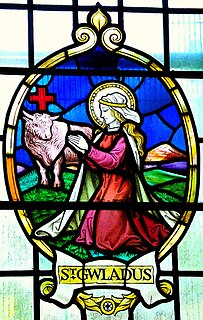 W
WSaint Gwladys ferch Brychan or St Gladys, daughter of King Brychan of Brycheiniog, was the queen of the saint-king Gwynllyw Milwr and the mother of Cadoc "the Wise", whose vita may be the earliest saint's life to mention Arthur. Gwladys's other children were Cynidr, Bugi, Cyfyw, Maches, Glywys II and Egwine. Today her main church and associated school is in Bargoed.
 W
WGwynllyw Filwr or Gwynllyw Farfog, known in English in a corrupted form as Woolos the Warrior or Woolos the Bearded was a Welsh king and religious figure.
 W
WBlessed John the Hairy was a holy fool (Yurodivy), of the Russian Orthodox Church in the second half of the 16th century. He endured a great many trials in his lifetime. "He did not have a permanent shelter, and at times took his rest at the house of his spiritual Father, a priest at the church of the All-Holy, or with one of the aged widows."
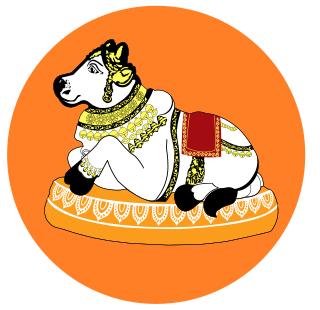 W
WThe Kalamukha were a medieval Shaivite sect of the Deccan Plateau who were among the first professional monks of India. Their earliest monasteries were built in Mysore.
 W
WShyama Charan Lahiri, best known as Lahiri Mahasaya, was an Indian yogi, guru and a disciple of the Kriya Yoga master Mahavatar Babaji. In 1861, he was chosen by his guru to revive the yogic science of Kriya Yoga to the public after centuries of its guarding by masters. He was unusual among Indian holy people in that he was a householder: marrying, raising a family, and working as a government accountant, he lived with his family in Varanasi rather than in a temple or monastery. Throughout his life, he spread Kriya naturally and rarely sponsored any organizations; nonetheless, his pious living attracted followers, and he became the guru of many advanced Kriya disciples, such as Panchanan Bhattacharya and Swami Sri Yukteswar Giri. For his exceptional lifestyle as an "Ideal yogi-householder", he became a spiritually inspirational figure and achieved a substantial reputation among 19th century Hindu religionists.
 W
WThe Leatherman was a vagabond famous for his handmade leather suit of clothes who traveled through the northeastern United States on a regular circuit between the Connecticut River and the Hudson River from roughly 1857 to 1889. Of unknown origin, he was thought to be French-Canadian because of his fluency in the French language, his "broken English", and the French-language prayer book found on his person after his death. His identity remains unknown, and controversial. He walked a repeating 365-mile route year after year, which took him through certain towns in western Connecticut and eastern New York, returning to each town every 34–36 days.
 W
WVenerable Luke the Stylite lived in Constantinople in the 10th century.
 W
WAbū al-ʿAlāʾ al-Maʿarrī was an Arab philosopher, poet, and writer. Despite holding a controversially irreligious worldview, he is regarded as one of the greatest classical Arabic poets.
 W
WMacarius of Egypt (300–391) was a Coptic Christian monk and hermit. He is also known as Macarius the Elder or Macarius the Great.
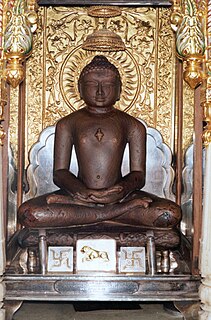 W
WMahavira, also known as Vardhamana, was the 24th Tirthankara of Jainism. He was the spiritual successor of the 23rd Tirthankara Parshvanatha. Mahavira was born in the early part of the 6th century BCE into a royal Jain family in Bihar, India. His mother's name was Trishala and his father's name was Siddhartha. They were lay devotees of Parshvanatha. Mahavira abandoned all worldly possessions at the age of about 30 and left home in pursuit of spiritual awakening, becoming an ascetic. Mahavira practiced intense meditation and severe austerities for twelve and a half years, after which he attained Kevala Gyan (omniscience). He preached for 30 years and attained Moksha (liberation) in the 6th century BCE, although the year varies by sect.
 W
WMaharishi Mahesh Yogi was an Indian yoga guru, known for developing and popularizing Transcendental Meditation, and for being the leader and guru of a worldwide organization that has been characterized in multiple ways including as a new religious movement and as non-religious. He became known as Maharishi and Yogi as an adult.
 W
WMarcella (325–410) is a saint in the Roman Catholic Church and Eastern Orthodox Church. She was a Christian ascetic in the Byzantine Era. After her husband's early death, she decided to devote the rest of her life to charity, prayer, and mortification of the flesh. She was killed by Alaric, king of the Visigoths because he was convinced that she had hidden treasure.
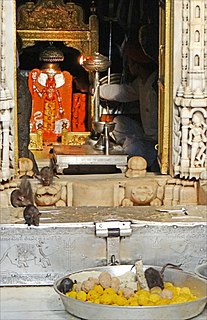 W
WKarni Mata was a female Hindu warrior sage born in the Charan caste. Also known as Shri Karniji Maharaj, she is worshiped as the incarnation of the warrior goddess Hinglaj by her followers. She is an official deity of the royal families of Bikaner and Jodhpur. She lived an ascetic life and was widely revered during her own lifetime. On the request of the Maharajas of Bikaner and Jodhpur, she laid the foundation stones of Bikaner Fort and Mehrangarh Fort, the two most important forts in the region. The most famous of her temples is in the small town of Deshnoke, near Bikaner in Rajasthan, and was created following her mysterious disappearance from her home. The temple is famous for its rats locally known as kabas, which are treated as sacred and given protection in the temple. Another temple dedicated to her during her lifetime differs from others in that it does not contain an image or idol of her, but rather a footprint to symbolize her visit to that place. Karni Mata is also known as "dadhi wali dokri" or Dadhali. There is one more famous temple, situated at Khurad, near Besroli railway station. This temple of Maa Karni, Indrabaisa was built by Maharaja Ganga Singh ji of Bikaner. Karnini Mata laid the foundation stone of Mehrangarh fort during reign of Rao Jodha. By the orders of her, Rao Jodha's son Rao Bika founded new city Bikaner.
 W
WMatsyendra, also known as Matsyendranātha, Macchindranāth, Mīnanātha and Minapa was a saint and yogi in a number of Buddhist and Hindu traditions. He is traditionally considered the revivalist of hatha yoga as well as the author of some of its earliest texts. He is also seen as the founder of the natha sampradaya, having received the teachings from Shiva. He is especially associated with kaula shaivism. He is also one of the eighty-four mahasiddhas and considered the guru of Gorakshanath, another important figure in early hatha yoga. He is revered by both Hindus and Buddhists and is sometimes regarded as an incarnation of Avalokiteśvara.
 W
WMendicant orders are, primarily, certain Christian religious orders that have adopted a lifestyle of poverty, traveling, and living in urban areas for purposes of preaching, evangelization, and ministry, especially to the poor. At their foundation these orders rejected the previously established monastic model. This model prescribed living in one stable, isolated community where members worked at a trade and owned property in common, including land, buildings and other wealth. By contrast, the mendicants avoided owning property at all, did not work at a trade, and embraced a poor, often itinerant lifestyle. They depended for their survival on the goodwill of the people to whom they preached.
 W
WYogi Naraharinath was a Nepalese historian, writer and saint of Nath tradition of Gorakhnath. He has written over 600 books in 28 different languages and has performed 129 Koti Homs throughout Nepal.
 W
WNath, also called Natha, are a Shaiva sub-tradition within Hinduism in India and Nepal. A medieval movement, it combined ideas from Buddhism, Shaivism and Yoga traditions in India. The Naths have been a confederation of devotees who consider Shiva, as their first lord or guru, with varying lists of additional gurus. Of these, the 9th or 10th century Matsyendranath and the ideas and organization mainly developed by Gorakhnath are particularly important. Gorakhnath is considered the originator of the Nath Panth.
 W
WNayakanahatti Thipperudra Swamy,, also referred as Tippeswamy, Thippeswamy or Thippeswami, was an Indian Hindu spiritual Guru, and social reformer. He is revered by both his Hindu and Muslim devotees.
 W
WOrigen of Alexandria, also known as Origen Adamantius, was an early Christian scholar, ascetic, and theologian who was born and spent the first half of his career in Alexandria. He was a prolific writer who wrote roughly 2,000 treatises in multiple branches of theology, including textual criticism, biblical exegesis and hermeneutics, homiletics, and spirituality. He was one of the most influential and controversial figures in early Christian theology, apologetics, and asceticism. He has been described as "the greatest genius the early church ever produced".
 W
WSaint Paisios of Mount Athos, was a well-known Greek Eastern Orthodox ascetic from Mount Athos, originally from Pharasa, Cappadocia. He was respected for his spiritual guidance and ascetic life and many people worldwide highly venerate Elder Paisios, especially in Greece and in Russia.
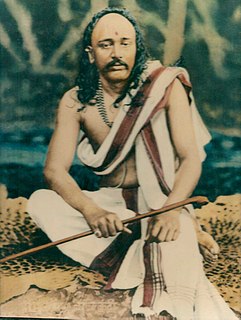 W
WPant Maharaj, born Dattatreya Ramchandra Kulkarni, was a Hindu yogi and guru in the Belgavi region of India and is regarded by his devotees as a saint and an incarnation of Dattatreya.
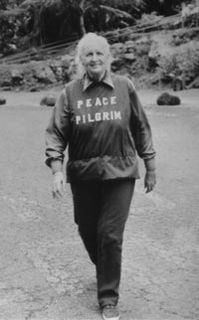 W
WPeace Pilgrim, born Mildred Lisette Norman, was an American spiritual teacher, mystic, pacifist, vegetarian activist and peace activist. In 1952, she became the first woman to walk the entire length of the Appalachian Trail in one season. Starting on January 1, 1953, in Pasadena, California, she adopted the name "Peace Pilgrim" and walked across the United States for 28 years, speaking with others about peace. She was on her seventh cross-country journey when she died.
 W
WPelagius was a theologian who advocated free will and asceticism. He was accused by Augustine of Hippo and others of denying the need for divine aid in performing good works. They understood him to have said that the only grace necessary was the declaration of the law; humans were not wounded by Adam's sin and were perfectly able to fulfill the law without divine aid. Pelagius denied Augustine's theory of original sin. Adherents of Pelagius cited Deuteronomy 24:16 in support of their position. Pelagius was declared a heretic by the Council of Ephesus in 431. His interpretation of a doctrine of free will became known as Pelagianism.
 W
WWilliam Frederick Pester was a German-born American pioneer of hippie lifestyles in California in the first half of the twentieth century, known as "the Hermit of Palm Springs". He was described as epitomizing "the strong link between the 19th century German reformers and the flower children of the 1960s", and inspired the eden ahbez song "Nature Boy", recorded by Nat King Cole and others.
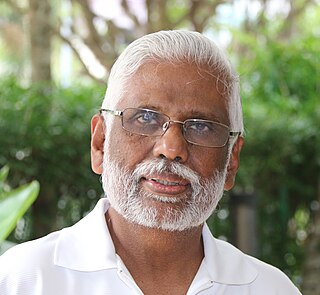 W
WBaskaran Pillai, also known as Dattatreya Siva Baba or Siva Baba, is an accomplished master of the Tamil Siddha tradition and one of the first of his lineage to bring secretive knowledge of the Tamil Siddhas to the West. Wayne Dyer was the first celebrity to follow and publicize Pillai's manifestation teachings through his book Manifest your Destiny, which he dedicated to Pillai. The Tamil Siddhar are spiritual renegades who believed in 200% life, i.e. living a 100% material and 100% spiritual life simultaneously. Since March 2007 Pillai has attracted a large number of viewers as testified by his free YouTube videos teaching the Siddha knowledge. Time called Pillai "The YouTube Guru". As a philanthropist he has initiated many projects across India, Mexico and the U.S., which include the Million Meals Project and educating underprivileged children. His educational programs in public schools and tuition centers improves the academic and social skills of disadvantaged students in India, Mexico and the United States through brain-enhancement sounds. These programs are implemented through the Tripura Foundation, established by Pillai in 1991, a consulting non-governmental organization to the United Nations Economic and Social Council (ECOSOC).
 W
WPythagoras of Samos was an ancient Ionian Greek philosopher and the eponymous founder of Pythagoreanism. His political and religious teachings were well known in Magna Graecia and influenced the philosophies of Plato, Aristotle, and, through them, Western philosophy. Knowledge of his life is clouded by legend, but he appears to have been the son of Mnesarchus, a gem-engraver on the island of Samos. Modern scholars disagree regarding Pythagoras's education and influences, but they do agree that, around 530 BC, he travelled to Croton in southern Italy, where he founded a school in which initiates were sworn to secrecy and lived a communal, ascetic lifestyle. This lifestyle entailed a number of dietary prohibitions, traditionally said to have included vegetarianism, although modern scholars doubt that he ever advocated for complete vegetarianism.
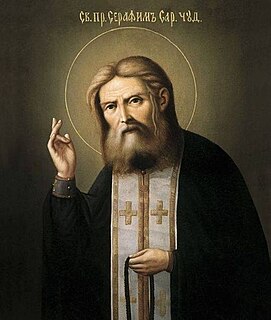 W
WSaint Seraphim of Sarov, born Prokhor Moshnin, is one of the most renowned Russian saints and is venerated in the Eastern Orthodox Church. He is generally considered the greatest of the 19th-century startsy (elders). Seraphim extended the monastic teachings of contemplation, theoria and self-denial to the layperson. He taught that the purpose of the Christian life was to acquire the Holy Spirit. Perhaps his most popular quotation amongst Orthodox believers is "Acquire a peaceful spirit, and thousands around you will be saved."
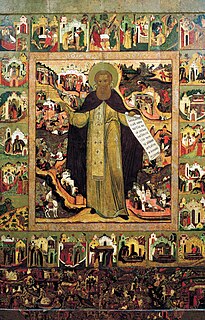 W
WSergius of Radonezh, also known as Sergiy Radonezhsky, Serge of Radonezh and Sergius of Moscow, was a spiritual leader and monastic reformer of medieval Russia. Together with Seraphim of Sarov, he is one of the Russian Orthodox Church's most highly venerated saints.
 W
WSai Baba of Shirdi, also known as Shirdi Sai Baba, was an Indian spiritual master who is regarded by his devotees to be a manifestation of Sri Dattaguru and identified as a saint and a fakir. He was revered by both his Hindu and Muslim devotees during, as well as after his lifetime.
 W
WShiva, also known as Mahadeva, is one of the principal deities of Hinduism. He is the Supreme Being in Shaivism, one of the major traditions within Hinduism.
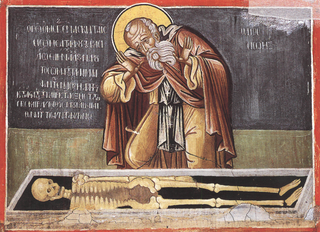 W
WSaint Sisoës the Great was an early Christian desert father, a solitary monk pursuing asceticism in the Egyptian desert in a cave of his predecessor, St Anthony the Great. St Sisoës is revered as a saint by Roman Catholic and Eastern Orthodox churches, who consider him a wonderworker. His feast day is observed on July 19 [O.S. July 6].
 W
WSophronius, called Sophronius the Sophist, was the Patriarch of Jerusalem from 634 until his death. He is venerated as a saint in the Eastern Orthodox and Catholic Churches. Before rising to the primacy of the see of Jerusalem, he was a monk and theologian who was the chief protagonist for orthodox teaching in the doctrinal controversy on the essential nature of Jesus and his volitional acts.
 W
WTadej (Thaddeus) of Vitovnica was a Serbian Orthodox elder and published author, credited for proposing the idea that our thoughts determine the outcome of our lives. He was a hegumen of the Vitovnica monastery and a spiritual father.
 W
WMatt Talbot was an Irish ascetic revered by many Catholics for his piety, charity and mortification of the flesh.
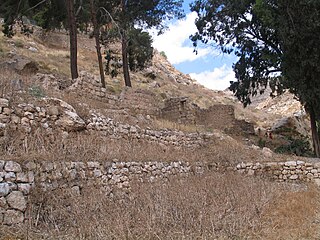 W
WTheoctistus, also spelled Theoktistos, known as the Venerable Theoctistus of Palestine, was an associate of Euthymius the Great. He was an ascetic who lived in a nearby cell at the Pharan lavra.
 W
WTheodosius the Cenobiarch was a monk, abbot, and saint who was a founder and organizer of the cenobitic way of monastic life. His feast day is on January 11.
 W
WSwami Vivekananda, born Narendranath Datta, was an Indian Hindu monk. He was a chief disciple of the 19th-century Indian mystic Ramakrishna. Influenced by Western esotericism, he was a key figure in the introduction of the Indian darsanas of Vedanta and Yoga to the Western world, and is credited with raising interfaith awareness, bringing Hinduism to the status of a major world religion during the late 19th century. He was a major force in the contemporary Hindu reform movements in India, and contributed to the concept of nationalism in colonial India. Vivekananda founded the Ramakrishna Math and the Ramakrishna Mission. He is perhaps best known for his speech which began with the words "Sisters and brothers of America ...," in which he introduced Hinduism at the Parliament of the World's Religions in Chicago in 1893.
 W
WYamabushi (山伏) are Japanese mountain ascetic hermits.
 W
WParamahansa Yogananda was an Indian Hindu monk, yogi and guru who introduced millions to the teachings of meditation and Kriya Yoga through his organization Self-Realization Fellowship (SRF) / Yogoda Satsanga Society (YSS) of India, and who lived his last 32 years in America. A chief disciple of the Bengali yoga guru Swami Sri Yukteswar Giri, he was sent by his lineage to spread the teachings of yoga to the West, to prove the unity between Eastern and Western religions and to preach a balance between Western material growth and Indian spirituality. His long-standing influence in the American yoga movement, and especially the yoga culture of Los Angeles, led him to be considered by yoga experts as the "Father of Yoga in the West."